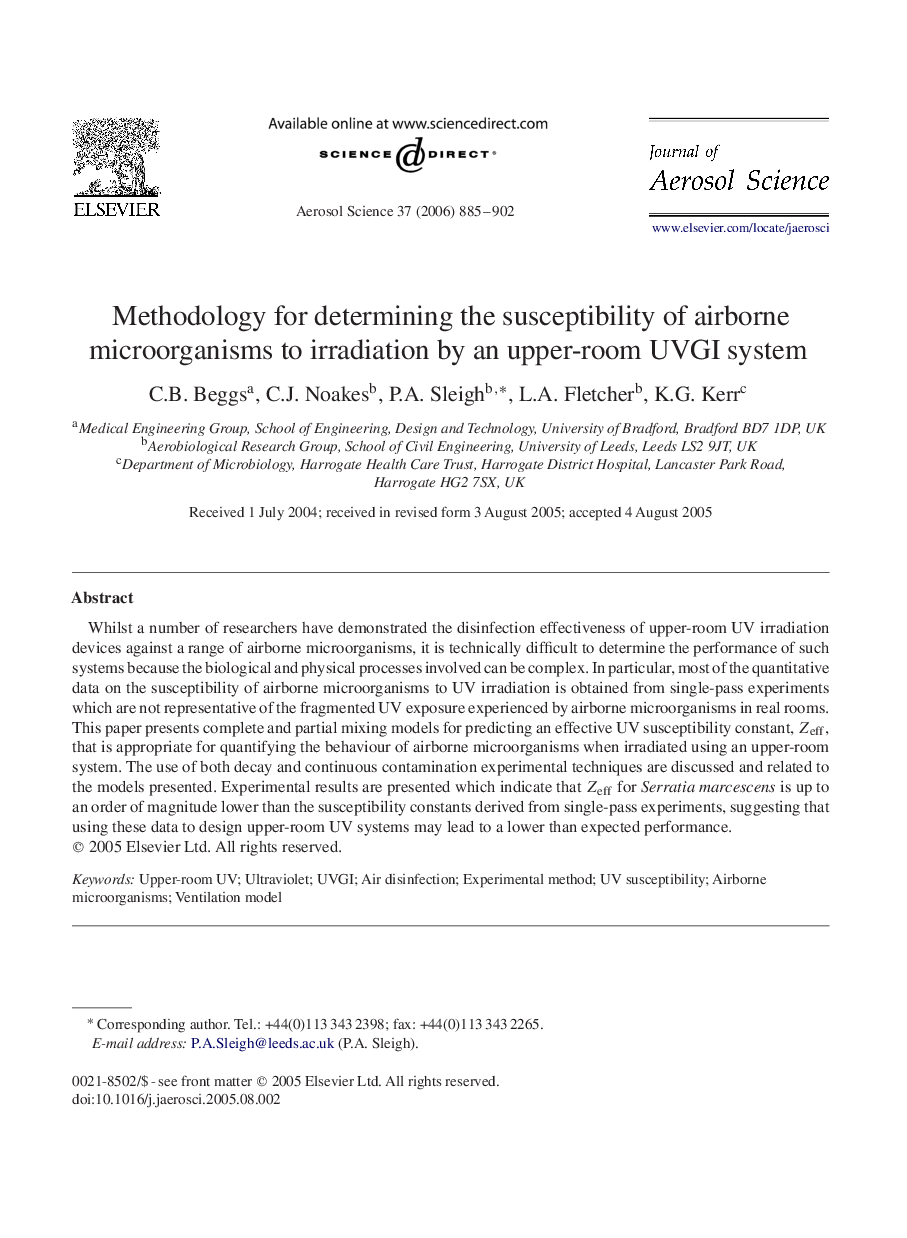| Article ID | Journal | Published Year | Pages | File Type |
|---|---|---|---|---|
| 4453404 | Journal of Aerosol Science | 2006 | 18 Pages |
Whilst a number of researchers have demonstrated the disinfection effectiveness of upper-room UV irradiation devices against a range of airborne microorganisms, it is technically difficult to determine the performance of such systems because the biological and physical processes involved can be complex. In particular, most of the quantitative data on the susceptibility of airborne microorganisms to UV irradiation is obtained from single-pass experiments which are not representative of the fragmented UV exposure experienced by airborne microorganisms in real rooms. This paper presents complete and partial mixing models for predicting an effective UV susceptibility constant, ZeffZeff, that is appropriate for quantifying the behaviour of airborne microorganisms when irradiated using an upper-room system. The use of both decay and continuous contamination experimental techniques are discussed and related to the models presented. Experimental results are presented which indicate that ZeffZeff for Serratia marcescens is up to an order of magnitude lower than the susceptibility constants derived from single-pass experiments, suggesting that using these data to design upper-room UV systems may lead to a lower than expected performance.
